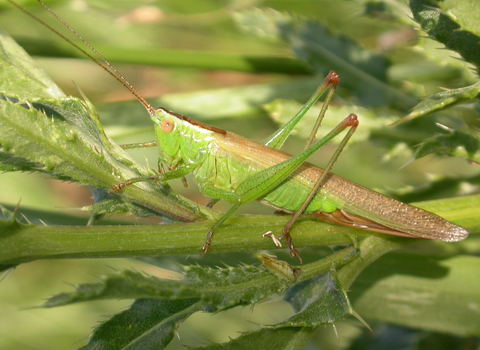
Long-winged Conehead ©Giles San Martin
Long-winged conehead
The long-winged conehead is so-named for the angled shape of its head. It can be found in grasslands, heaths and woodland rides throughout summer.
Scientific name
Conocephalus discolorWhen to see
May to OctoberSpecies information
Category
Statistics
Length: 1.7-1.9cmCommon.
